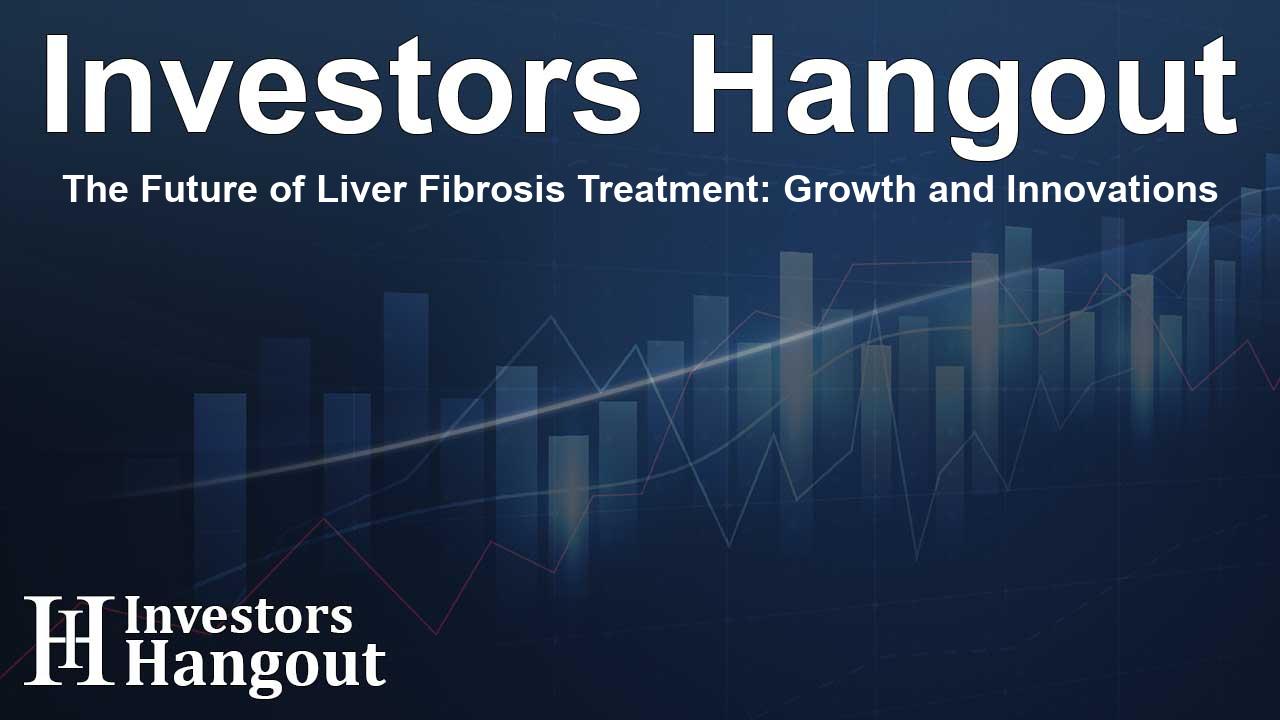The Future of Liver Fibrosis Treatment: Growth and Innovations

The Liver Fibrosis Treatment Market: A Growing Landscape
The liver fibrosis treatment market is on the brink of significant transformation, with new therapies and diagnostics emerging to combat this pressing health issue. Currently valued at approximately USD 17.51 billion, its projected growth to USD 51.16 billion by 2033 highlights a robust compound annual growth rate (CAGR) of 10.8%. This upward trajectory in the market is largely attributable to the increasing prevalence of liver fibrosis, a condition marked by the accumulation of extracellular matrix proteins leading to liver scarring and dysfunction.
Driving Factors Behind Market Growth
Several factors are propelling the liver fibrosis treatment market forward. Key contributors include the escalating incidence of diseases such as non-alcoholic fatty liver disease (NAFLD), chronic hepatitis C virus infections, and non-alcoholic steatohepatitis (NASH). The World Health Organization has underscored the severity of liver diseases, citing approximately 2 million deaths annually, and has highlighted that liver cancer is a significant aspect of this issue. Additionally, the expanding aging population and rising metabolic disorders are amplifying the need for effective treatment solutions.
Advancements in Drug Development
Innovations in antifibrotic drugs such as belapectin, cenicriviroc, and liraglutide are revolutionizing treatment approaches. These medications target the underlying mechanisms of fibrosis, aiming to halt or reverse damage to the liver, which ultimately improves patient quality of life. The development of advanced diagnostic technologies, including next-generation plasma protein profiling, is also instrumental in personalizing treatment plans and identifying patients most likely to benefit from specific therapies.
Healthcare Initiatives and Their Impact
The roll-out of various government initiatives can significantly enhance awareness and early detection of liver fibrosis. Increased funding in the healthcare sector, coupled with ongoing public-private partnerships, has led to broader access to screening programs and advanced therapies. Timely detection of liver diseases is crucial, particularly for individuals at high risk, who are now benefiting from enhanced diagnostic tools.
Challenges in the Market
Despite the promising growth of the liver fibrosis treatment market, certain challenges persist. A significant barrier remains the high cost of treatment, which varies depending on the disease's progression and the underlying cause. Moreover, limited access to healthcare resources and regulatory hurdles in developing regions can hinder treatment availability. Addressing these concerns through innovative and cost-effective solutions is essential for broader patient access.
Technological Innovation: The Future of Treatment
The landscape of liver fibrosis treatment is evolving rapidly through technological advances. Innovations in diagnostics and therapeutics have created a renaissance within the sector. Recently, the FDA approved Rezdiffra (resmetirom), a groundbreaking treatment for non-cirrhotic NASH and moderate to advanced liver fibrosis, marking a significant milestone in therapeutic development. This approval illustrates the commitment to bringing effective solutions to market that can meaningfully impact patient outcomes.
Precision Medicine in Liver Care
The drive towards precision medicine is reshaping liver fibrosis management. With increasing demands to address the multifaceted nature of liver diseases, therapies combining stem cell approaches and traditional treatments are emerging. These combination therapies not only aim to repair liver damage but also enhance liver function via novel mechanisms.
Market Outlook: A Promising Future
The future of the liver fibrosis treatment market holds significant promise, presenting ample opportunities for investors, healthcare professionals, and pharmaceutical companies. As therapeutic candidates enter the market, addressing unmet needs in chronic liver disease management will be vital. The growing focus on non-invasive diagnostic methods and routine screenings represents a major shift towards preventive care and early intervention.
By 2033, therapies aimed at treating liver fibrosis will likely become a cornerstone of global healthcare strategies. Emphasis on regulatory approvals and funding will aid in expanding access to these critical treatments, transforming the liver disease care paradigm. Moreover, integrating artificial intelligence and cutting-edge diagnostic tools could redefine clinical approaches, ensuring tailored interventions for patients.
Key Players in the Liver Fibrosis Market
Several key industry players are significantly influencing the liver fibrosis treatment market's trajectory. Leading companies include Gilead Sciences, Merck & Co., Bristol-Myers Squibb, and Pfizer, among others, each contributing valuable innovations and therapies to help combat liver diseases.
Frequently Asked Questions
What is the projected market value of the liver fibrosis treatment market?
The liver fibrosis treatment market is projected to reach USD 51.16 billion by 2033.
What are the main drivers of growth for this market?
The main drivers include the rise in liver disease prevalence, advancements in antifibrotic drugs, and increasing patient demand for precision therapies.
What challenges does the liver fibrosis treatment market face?
Challenges include high treatment costs, limited healthcare infrastructures, and regulatory complexities in developing regions.
How are technological innovations impacting drug development?
Technological advancements enable better diagnostic capabilities and personalized treatment strategies, enhancing overall patient care.
Who are the key players in the liver fibrosis treatment market?
Key players include Gilead Sciences, Merck & Co., Bristol-Myers Squibb, Johnson and Johnson, and others leading the charge in innovative treatments.
About The Author
Contact Hannah Lewis privately here. Or send an email with ATTN: Hannah Lewis as the subject to contact@investorshangout.com.
About Investors Hangout
Investors Hangout is a leading online stock forum for financial discussion and learning, offering a wide range of free tools and resources. It draws in traders of all levels, who exchange market knowledge, investigate trading tactics, and keep an eye on industry developments in real time. Featuring financial articles, stock message boards, quotes, charts, company profiles, and live news updates. Through cooperative learning and a wealth of informational resources, it helps users from novices creating their first portfolios to experts honing their techniques. Join Investors Hangout today: https://investorshangout.com/
The content of this article is based on factual, publicly available information and does not represent legal, financial, or investment advice. Investors Hangout does not offer financial advice, and the author is not a licensed financial advisor. Consult a qualified advisor before making any financial or investment decisions based on this article. This article should not be considered advice to purchase, sell, or hold any securities or other investments. If any of the material provided here is inaccurate, please contact us for corrections.
